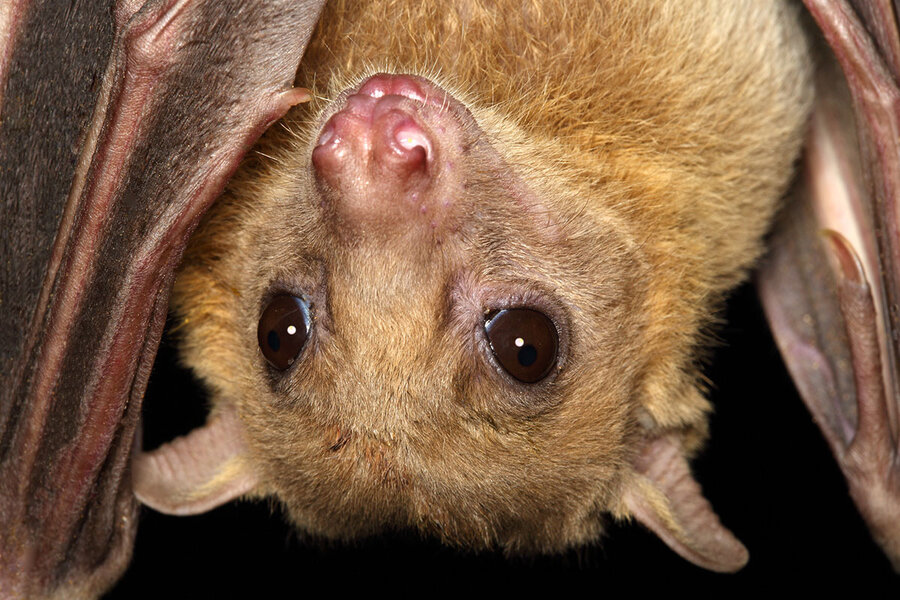How bats learn to 'talk'
How do the world’s only flying mammals communicate? With a distinctive bat-ois, say scientists.
Researchers at Tel Aviv University (TAU) have observed young captive bats adopting new “dialects” simply by hearing them repeatedly, making them one of the few animals known to have a capacity for vocal learning. These findings, which were published in the Oct. 31 issue of PLOS Biology, could offer insights into the origins of language.
“These bats may help us shed more light on the evolution of speech acquisition skills,” says coauthor Yosef Prat, a PhD candidate at TAU.
For one year, researchers raised 14 Egyptian fruit bat pups with their mothers in controlled colonies, exposing each young bat to two different vocalizations: the natural call of its mother and a separate recording that varied in pitch or frequency. They found that the pups in each group developed a dialect resembling the recording.
“The general assumption in this field is that most animals develop innate vocalizations regardless of what they hear, and that human vocal learning abilities have developed during hominid evolution,” says Mr. Prat. “The finding that bats learn the common dialect in their roost was unusual.”
Bats aren’t the only species that exhibit vocal learning. Songbirds, elephants, and cetaceans can pick up dialects.
Scientists know little about the origins of spoken language, which is believed to have emerged in humans within the past 500,000 years. Dozens of theories attempt to explain the unprecedented complexity of this skill, but none have done so conclusively.
“Studying vocal communication and vocal learning in animal models is a very useful way to approach the problem,” says Olga Feher, an assistant professor of cognitive psychology at the University of Warwick in England.
But animal vocalizations and human speech are very different things, says Jamin Pelkey, an associate professor of linguistic anthropology at Ryerson University in Toronto. Although both use patterned signs and social learning, “language proper” – finding and creating novel comparisons between seemingly unrelated concepts – is far more complex.
“All species communicate,” says Dr. Pelkey. “Unlike other animals, though, human beings are able to use sound patterns for functions that are far stranger – functions that are imaginative, self-exploratory, theoretical, and critical. When speech is involved in these stranger functions, that is what we mean by spoken ‘language.’ ”






